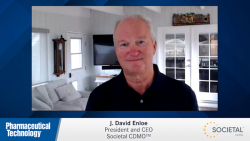
OR WAIT null SECS
- About Us
- Advertise
- Contact Us
- Editorial Info
- Editorial Advisory Board
- Do Not Sell My Personal Information
- Privacy Policy
- Terms and Conditions
© 2025 MJH Life Sciences™ , Pharmaceutical Technology - Pharma News and Development Insights. All rights reserved.
Understanding the Extent of the Counterfeit and Substandard Drug Problem
Important research is under way that will help us understand the extent of the presence of substandard, adulterated and counterfeit drugs around the world, and, thus, strengthen enforcement efforts and public outreach programs. Future studies will focus on the API and overall chemical content
Last week, shortly before the birthday of Nigeria’s anti-counterfeiting pioneer Dora Akunyili today, came news of another fake drug reaching African supply channels, this time in central Africa.
The World Health Organization reported (in Alert 4/2015) that tablets of counterfeit diazepam had surfaced in the Democratic Republic of Congo, in Central Africa. The tablets did not contain the active ingredient at all, but rather, 10-20 mg of haloperidol, an antipsychotic drug often used to treat schizophrenia. The drug can cause dystonic reactions in the face, neck and tongue, and would pose danger if administered to children.
Ms. Akunyili, a pharmacist and former director general of Nigeria’s FDA-equivalent, the National Agency for Food and Drug Administration and Control (NAFDAC), had put her life on the line for years to protect the safety of that nation’s pharmaceutical supply.
She died last year, but her example and hard line against counterfeiters spurred other African nations to take action. It also revealed the ugly, mob-run nexus of the fake pharma market, not only in Africa but around the world. It is amazing how little we know about it, and, despite increased access to inexpensive advanced analytics technology and interpretive software, how ill-equipped we are to deal with it.
The counterfeiters, as usual, preyed on consumer confusion and trust, including the names of two manufacturers, and even stamping the bottles in red type “Government of Uganda, For Public Use Only. ”
The fakes were found in two forms, one sold as Solina, with a batch number of SBG038 and an expiration date of August 2017, and the other as Diazpam, Batch #2332 with an expiration date of October 2016. Tablets, meanwhile, were printed with the name of a drug manufacturer, AGOG, that does not manufacture diazepam, and containers of the drug both referenced the manufacturer CENTAUR, which manufacturers diazepam but not halperidol.
Although progress is slow in understanding the scope of the world’s drug counterfeiting and substandard and tampered drug presence, important research is under way that promises to strengthen enforcement efforts and public outreach and education programs.
Late last year, researchers looked into the need for better public outreach and education on the potential risks of taking any medication (including substandard and potentially counterfeited or adulterated drugs), focusing on Laos.
Another paper published last December by University of Maryland economics professor Ginger Zhe Jin focused on differentiating between substandard and counterfeit drugs, drawing attention to a paper that will soon be published in the Journal of Economics and Management Strategy.
These studies may be limited by academic budgets but they are critical to improving our understanding of the size of the global counterfeit and substandard/adulterated drug problem, and to refining distinctions between problems that share common characteristics. The key will be focusing on chemical content, since API loading is the best way to distinguish between drugs that were intentionally adulterated or counterfeit, and shoddy, substandard drugs reflecting inadequate cGMP compliance.
Only by understanding what we are up against can we come up with comprehensive solutions for regulation, enforcement, public outreach and use of modern analytics and technology.


